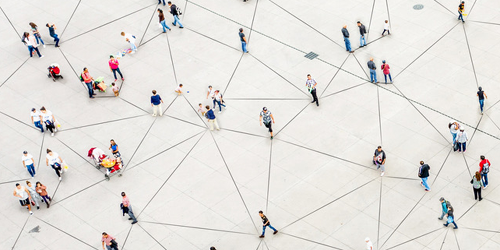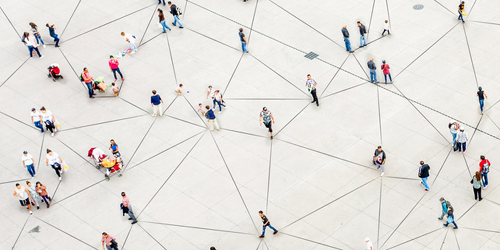Predicting Contagion Speed
The rate at which contagious diseases spread depends dramatically on a society’s connectivity. The medieval Black Plague in Europe advanced a mere 1.5 km/day. In the modern, globally connected society, infections like Zika or the coronavirus can diffuse at frightening speeds of hundreds of km/day. Existing approaches for analyzing infectious diseases, however, are still limited in their ability to predict how diseases spread at the level of individual people. Now, Sam Moore and Tim Rogers of the University of Bath in the UK have developed an analytical technique for predicting the speed of contagion for individuals within a network. The model might lead to tools that can help health authorities identify the most vulnerable or dangerous individuals in an outbreak.
Physicists have developed many models for describing the dynamics of infectious diseases. Most previous analyses based on such models either describe how diseases spread on large scales—cities, social groups, or regions—or require computationally costly numerical simulations to capture individual dynamics. To develop an analytical, individual-level description, Moore and Rogers apply a statistical mechanics approach that likens contagion to the passing of a message. This “message passing” accurately captures some realistic disease features, such as probabilities of infection and recovery that change as the epidemic progresses. The duo derives analytical formulas that, for a simple network, can be used to compute the arrival time of the infection at each individual in the network. Compared to numerical methods, the authors say that their analytical approach is faster and better at pinpointing the network and disease characteristics that most affect the epidemic speed.
This research is published in Physical Review Letters.
–Matteo Rini
Matteo Rini is the Deputy Editor of Physics.





